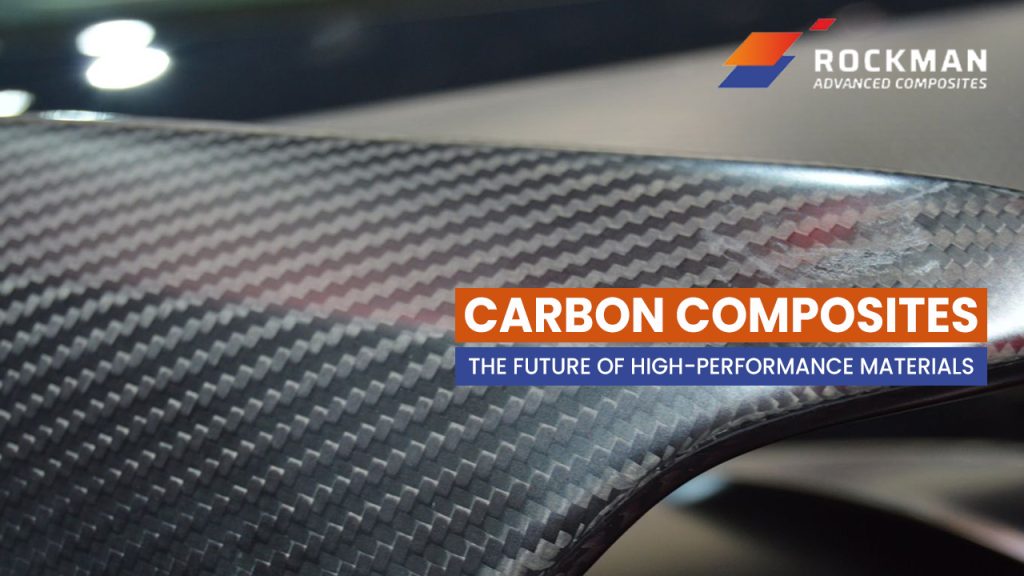Carbon composites or carbon fiber-reinforced polymers are composite materials comprising of carbon fibers comprising at least 92% carbon by weight and a polymer matrix. With their invention in the 1960s, carbon composites have emerged as a key material used across multiple industries and adopted into a range of engineering disciplines. Carbon composites are incredibly strong, stiff, and lightweight materials that have revolutionized modern engineering. This composite material has become a staple material for industries like aerospace, automotive, sports, civil engineering, automotive engineering, and even medical applications.
Understanding Carbon Composites
Carbon composite is a fine example of a high-performing composite material that is carefully fabricated from two primary components, carbon fibers and polymer matrix. The structural makeup of these materials makes the composite strong, stiff, and lightweight, outperforming metals like steel and aluminium. This composite material is made by weaving carbon fibers into a fabric that is permeated with resin and treated under heat and pressure to form a rigid composite structure.
Key Advantages of Carbon Composites
Carbon composites have set a new standard in material engineering, as these materials are known for their exceptional strength and durability. Besides, the popularity of composite materials is majorly due to the synergy between the components where the matrix protects the reinforcement from environmental damage and shifts stress to the fibers while reinforcement contributes to tensile strength and rigidity. Key advantages of this material include:
High Strength and Low Weight
Carbon composites’ remarkable property is their high strength-to-weight ratio, which makes this material lighter than metals like steel and aluminium. Owing to its superior strength, carbon composites are preferred where reducing weight is essential like aerospace and automotive industries.
Exceptional Durability
Carbon composites are highly resistant to wear and tear, thus ensuring longevity in challenging conditions. Besides, this composite material does not corrode, unlike metals, thus making them ideal for use in industrial machinery and marine environments.
Superior Thermal and Chemical Resistance
Carbon composites can withstand extreme weather conditions and harsh chemicals. This makes carbon composites ideal for aerospace and defense applications where materials are regularly exposed to high temperatures.
Versatility in Applications
Carbon composites are highly versatile, as these materials find application across a diverse range of industries. The versatility allows composites to be customized as per specific requirements, from electrical insulation to thermal resistance and from renewable energy to medical technology.
Energy Efficiency
Carbon composites because of their lightweight nature lead to fuel efficiency in automotive sectors. Lighter vehicles are known for consuming less fuel, reducing carbon emissions, and promoting environmental sustainability.
Applications of Carbon Composites
Carbon composites are used for a wide range of applications across diverse industries because of their lightweight, strong, and resistant to corrosion features, besides having a high strength-to-weight ratio. These features have made carbon composites better than many metals and materials and led to their popularity across diverse sectors. Carbon composites have gained immense prominence for a wide range of applications across diverse industries. Some of the prominent sectors where carbon composite finds usage include:
Aerospace and Aviation
The manufacturers of the aerospace industry make use of carbon composites to make different aircraft components like fuselages, interior structures, and wings that significantly reduce weight while maintaining the structural integrity of the aircraft. Thus, the aviation industry is amongst the largest consumers of carbon composites.
Automotive Industry
Carbon composites have quickly made inroads in the automotive industry, as this advanced material is used to create vehicle bodies, chassis, and interiors. This not only reduces the vehicle’s weight but also leads to better fuel efficiency and performance. Carbon composites are also extensively used in high-end sports cars, making this material a preferred choice in the automotive sector.
Sports and Recreation
Carbon composites have revolutionized the sports and recreation industry by allowing manufacturers to create lightweight yet durable sports equipment. The highly durable and lightweight sports equipment like bicycles, tennis rackets, golf clubs, and skis enhance athletic performance by providing strength without additional weight.
Wind Energy
The renewable energy sector is making use of carbon composites to create lighter and highly efficient wind turbine blades that boost energy production and reduce maintenance costs. Carbon composites provide the necessary stiffness to the wind turbine blades without adding a significant amount of weight.
Medical Applications
Carbon composites due to their biocompatibility, durability, and lightweight features are considered ideal for medical applications. This advanced material is increasingly used in making prosthetics and orthopedic implants because of its lightweight nature.
Summary
Carbon composites with their unparalleled strength, lightweight nature, and versatility have become a valuable asset of modern engineering. Redefining the standards of material performance across industries, carbon composites are paving a path for stronger, lighter, and more efficient products. With the on-going research and advancement, the properties and sustainability of the carbon composites are going to be enhanced. Greater breakthroughs are expected in the carbon composite technology that will benefit multiple sectors, from aerospace to automotive and from sports to renewable energy.








